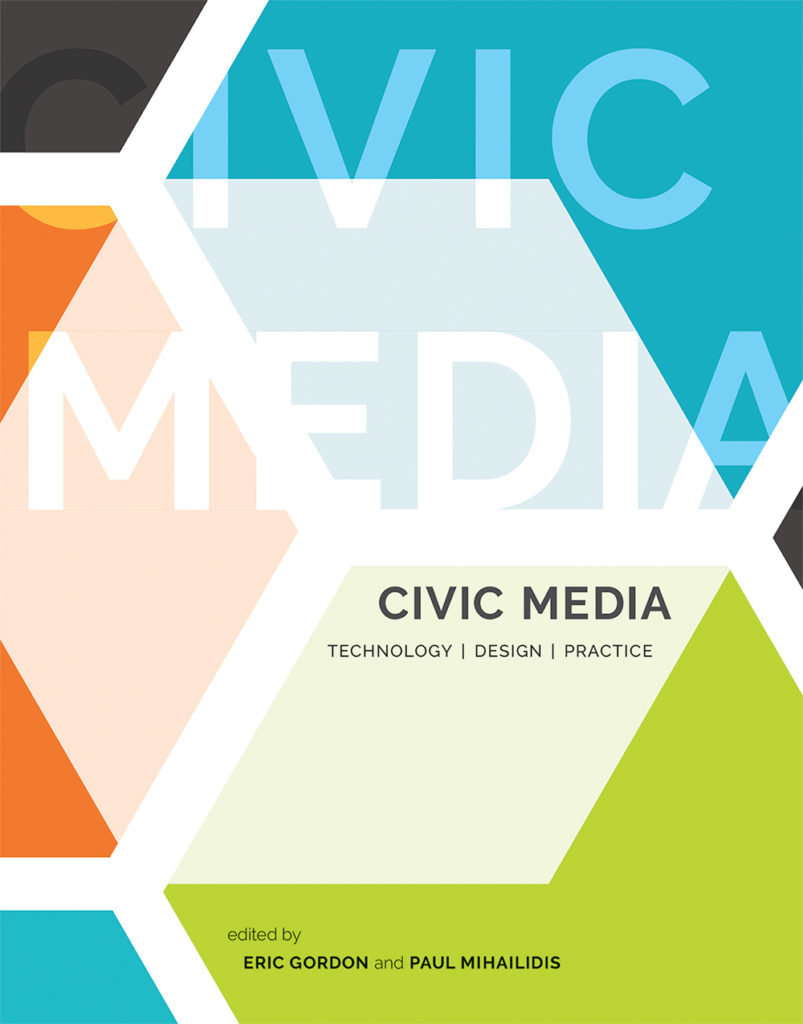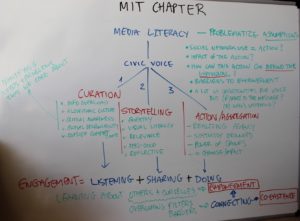Mihailidis P. and R. Gerodimos (2016), “Connecting Pedagogies of Civic Media: The literacies, Connected Civics, and engagement in daily life” in E. Gordon and P. Mihailidis (eds), Civic Media: Technology, Design, Practice, Cambridge, MA: MIT Press
Abstract
A host of large-scale civic movements over the past decade have employed digital technologies as facilitators for the organization, engagement, and participation of citizens in democratic processes. These large-scale events, however, overshadow compelling local grassroots uses of connective technologies for engagement in civic life. Stories of young people using their voices to fight against social oppression grow more common with each passing year. The well-documented DREAMer movement provides a strong example of young activists using their voices to repurpose narratives of immigration into calls for civic and political awareness (Zimmerman 2012). Their activism, in the form of videos, images, art, and text, provides a space for marginalized voices to gather, interact, and advocate for reform and rights. Citizens also utilized social networks to react to the events of racial injustice, oppression, violence, and death in Ferguson, New York City, Florida, and beyond. Civic media are bypassing not only traditional power structures, but also the “transaction costs” (Shirky 2010) that constrain civic voices to participate in traditional media outlets.
This growing presence of digital technologies as primary facilitators for participation in civic life brings about important questions about the competencies—or literacies— needed to effectively navigate digital spaces for civic engagement and participation in digital culture. How young people learn to engage in civic life is a question that has historically been explored by the ability to transfer rote knowledge of government structure, process, and function, and tangible actions that are situated in the physical world and rooted in measurable outcomes like voting, volunteering, paying taxes, participating in jury duty, and attending regular town hall meetings. While such metrics still play an important role in understanding the myriad of ways people engage in civic life, the increasing centrality of digital technologies in daily life necessitates the re-imagining of how we approach teaching and learning about engagement in civic life today (Gerodimos 2008, 2012; Mihailidis 2014b, 2013).
This chapter explores the role of pedagogy in preparing young people for active and inclusive participation in civic life. It argues for the need to insert more explicit attention to civic voice—the dispositions and modalities of expression that young people use to participate in daily civic life—in media and digital literacy pedagogies that can support both formal and informal spaces of learning. It argues for the need to centralize participatory culture in teaching and learning about media’s role in civic life.
We argue that the role of pedagogies, stemming from work in the literacies and in connected civics, opens up the digital realities of civic life for young people, and finds ways to connect the classroom and the community to bring teaching and learning with and about civic media into relevant and applied social worlds of young people. The chapter concludes with reflections on an initiative that has influenced our work in pedagogies of civic media: this is the Salzburg Academy on Media & Global Change – a summer activist pedagogy and action research incubator where teaching and learning blend theory and practice, inquiry and expression, to advocate for inclusive engagement and participation in civic life.
Get the book on Amazon


